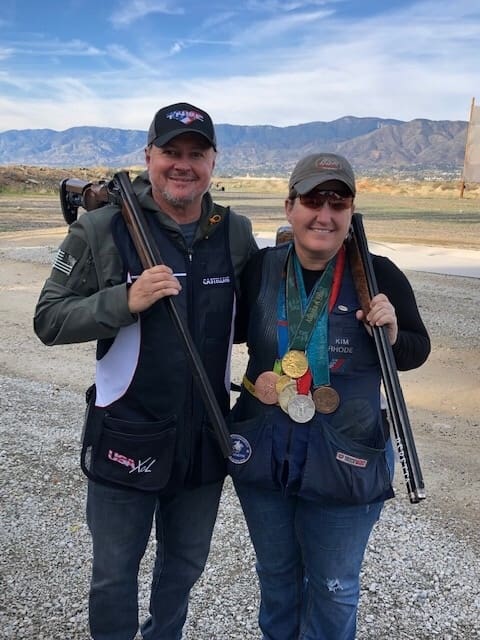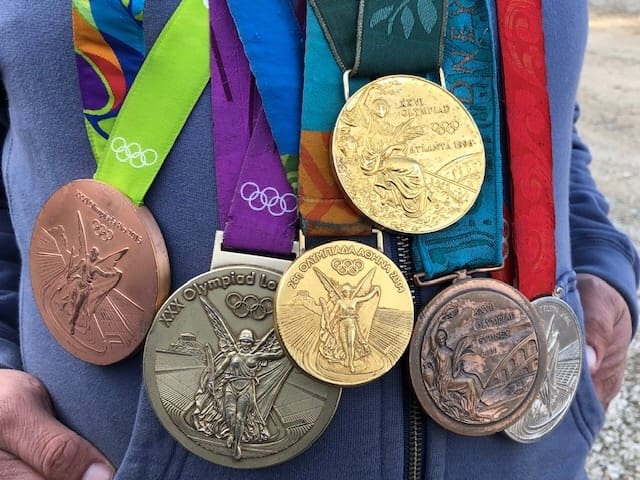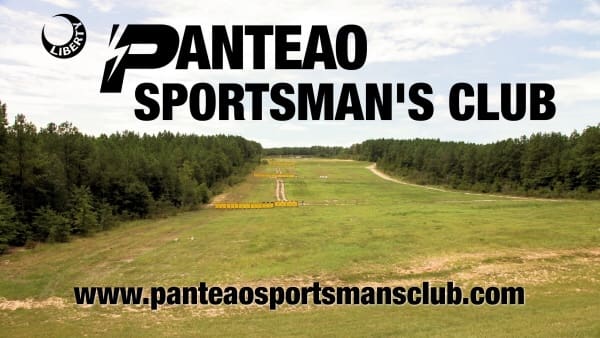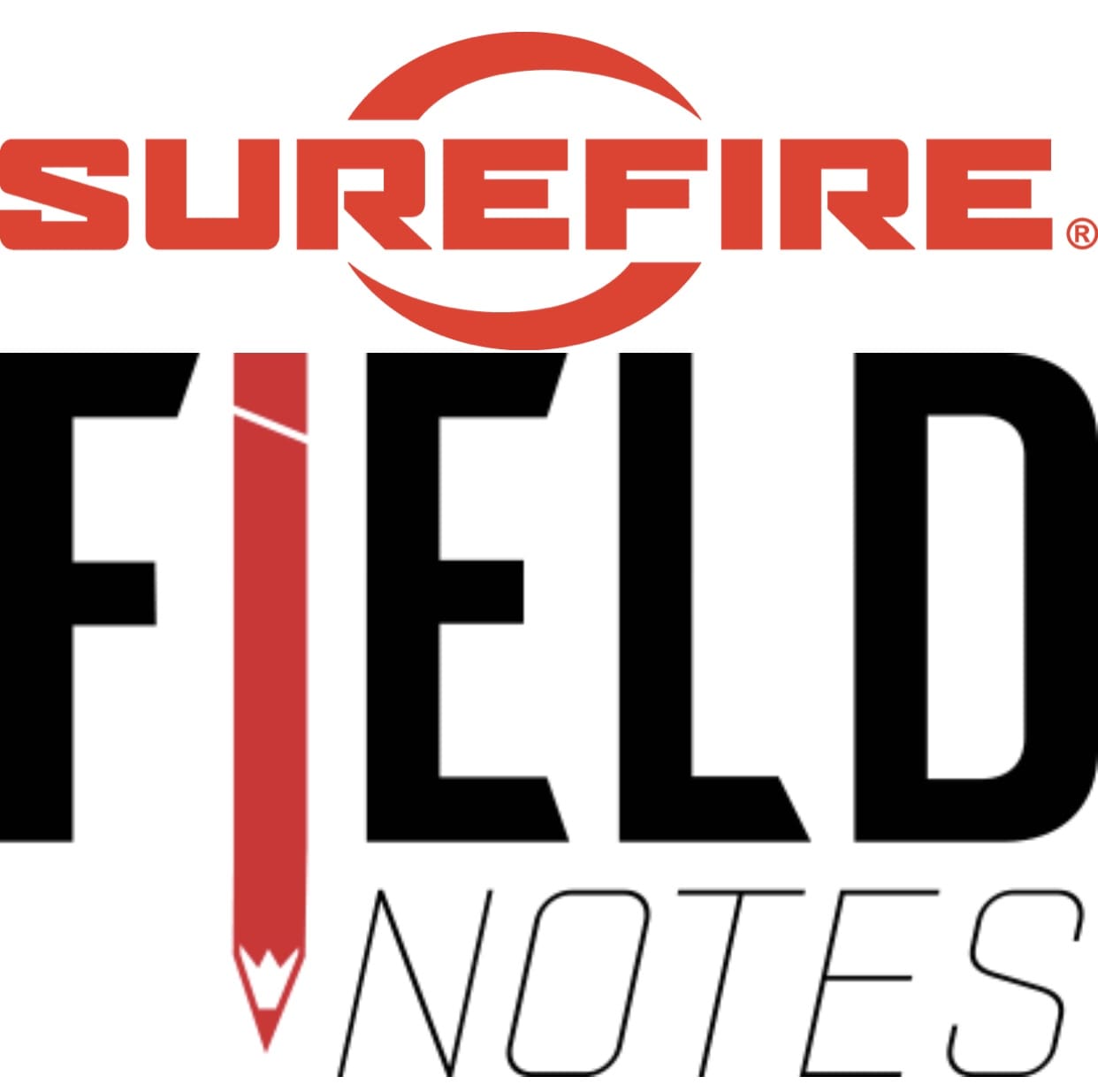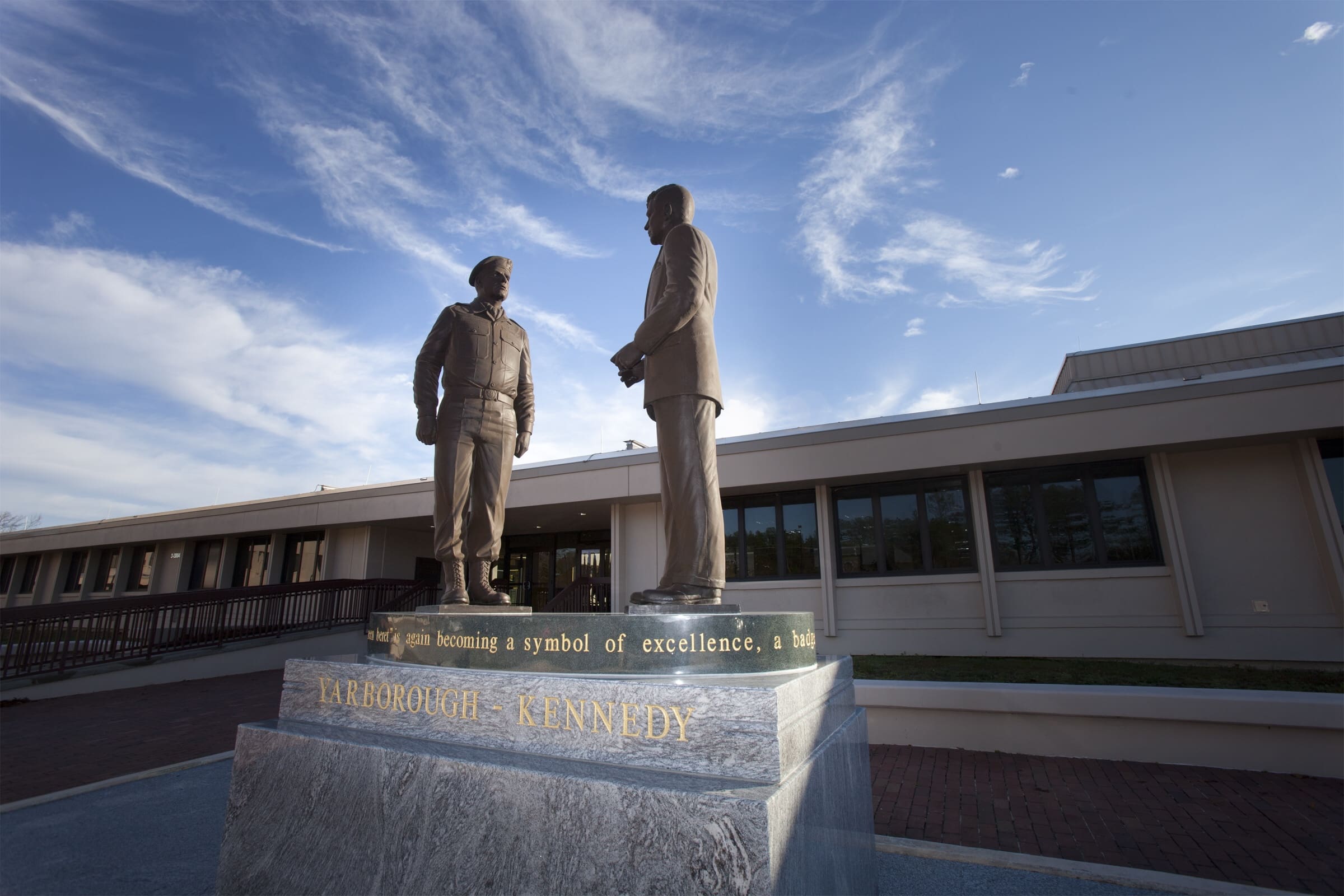This article originated in 2013 as “Should I Send Gear To This Blogger?” Since SHOT Show is right around the corner, I thought I’d tailor the information a little. For instance, last time I published a version, I added info on testing. This time, I’ll briefly mention fundraisers and charities.
Originally the story focused primarily on bloggers, since there is no bar to entry and the Internet is rife with them, but the question of sample requests from military personnel has come up regularly. I received some excellent feedback on that aspect from a reader which I’ve since rolled into the article. Expect to get all kinds of pitches during SHOT Show from a myriad of requestors.
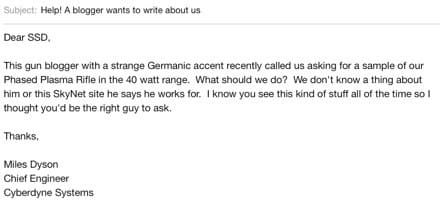
I regularly field questions from industry about being contacted by potential gear reviewers for product samples. Most often, they’re unsure of the validity of the site or person making the request. Often, the industry rep who contacts me for advice doesn’t have a lot of time or experience dealing with “media” and wants me give them a simple “yes” or “no” answer. Instead, I send them off with some homework in the form of several questions to ask of the potential reviewer and themselves. I thought it might be helpful to share them with you as well.
Some are bloggers, some are regulars on various forums and others are military/LE personnel. Some do this for a living, others post reviews due to an interest in weapons and gear, while still others are just looking for a pile of “free stuff.” Most of the folks who contact you will think they have your best interest at heart, but let’s face it, it’s a jungle out there. This is very important. It is quite easy to get a media badge for SHOT Show. Just because the person approaching you has a media badge, doesn’t mean they are of the caliber you’d expect. What’s more, some people work for your competitors and will wear a media badge one day and an exhibitor badge the next.
The internet is awesome. It allowed me to create SSD without having to buy a print press and hire a huge staff of reporters, but it also allows for literally anyone to set up a website and start the hustle for free gear. I want to make this perfectly clear. The point of these questions isn’t to serve as a bar to entry for anyone. The next SSD might be out there somewhere and we want to encourage quality, not stifle it. Nor is the list all-inclusive, but it will certainly serve as a great baseline. Rather, this is a guide for those in industry who feel they are barraged by a stream of open hands and unsure of how to deal with them.
Who Are They?
You are assessing the whole person. Who they are, how they approach you, their deportment, online behavior, everything. It’s like a job interview. When they write about your products, by extension, they are representing you.
The very first thing any prospective reviewer should do, either via phone, email, or in person (at a trade show) is tell you who they are and where they publish. If not, they are probably full of it, or don’t have enough experience to be effective. Either way, steer clear.
If they do it in person, take a look at them. Are they wearing the Tactical Tuxedo? Covered in morale patches? In and of itself that isn’t a disqualifier, but it can certainly be entertaining (please send me a pic for a “tactical fashion police” post). Are they properly dressed for the occasion, clean, organized?
Ask them what qualifies them to write about your product. There’s no right or wrong answer here, but you have to be satisfied with what they tell you. As a corollary, ensure they actually understand what your product is used for.
On a similar note, ask them about their day job. Some guys do this full time, so that one’s easy. If not, find out what else they are up to. Do they work for one of your competitors? Yes, those guys exist. Did they tell you about how they review gear and are also developing a few designs of their own? Or, better yet, working with other companies to test gear for them and develop products? All of those are flags to stay away. As gear reviewers and reporters we get access to a lot of behind the scenes info including trade secrets and developmental products. Only a hustler would put himself in a ethically questionable situation by asking to see your products while he serves as your competition.
What’s Their Demeanor?
Listen really hard to what they say, and how they say it. Are they confident and professional or do they come off like a used car salesman?
Do they ask for money or ask you to purchase advertising in order to review your product? If so, RUN away from them and tell all of your friends to steer clear as well. Paid reviews are bad for business. Also, tell me so I can place them in my mental Rolodex of shame.
Did they offer to “test” your product? I am retired from the military. My last assignment was as a Project Officer in the most exclusive of the five DoD Test and Evaluation Activities. I can tell you from experience, that testing requires use of the scientific method, a detailed test plan, and takes hundreds if not thousands of test data points. This equates to a great deal of time and money. Most of your products are already built to a spec so what good is a guy going to do by taking one of your products down to the local range and shooting a couple of magazines through it, or lighting a match to it, or dropping his barbell on it? Absolutely nothing. These “tests” are complete BS and generally make your product look bad since they are subjected to unrepeatable, anomalous protocols and arbitrary standards that they weren’t built for. Leave testing to guys in lab coats. On the other hand, if a guy wants to do a demonstration or examine an aspect of your product, and you are comfortable with his plan, go for it. Just remember, you have to live with the results of what he does.
Instead, they should be talking about reviews which provide basic facts about the item’s physical properties as well as impressions on how it performs for that reviewer. You’ll notice we don’t do a lot of traditional reviews here in SSD because of the time they take. Instead, we concentrate on breaking news. But, we do provide impressions of items that we’ve had experience with.
Do they immediately start name dropping? While this isn’t necessarily bad, it is a trick often used to gain your confidence by associating themselves with others with better credentials.
Do they try to win your confidence by telling you all about what your competition is up to? If so, they’ll probably do the same to you once they are off to the next guy.
Do they speak like they understand that the product sample they are asking for isn’t really free and affects your bottom line?
Many small companies are owned by former military personnel. They aren’t used to the business world or dealing with professional BS artists. What’s more, the more selectively manned the unit someone belonged to in the military, the more susceptible they are to being bamboozled in the business world. At their unit they were sheltered. It was all mission focus. The only people who had access to them were vetted and deemed trustworthy. Out here, it’s a dog-eat-dog world and those of questionable morals work hard to insert themselves into circles of trust (refer to the earlier comment on name dropping). I’ve got lots of buddies who are ETSing or retiring and the con men are lining up to associate themselves with these guys and suck them dry. Lots of the unscupulous will be at SHOT Show, looking for free booze and opportunities to exploit.
Where And How Often Do They Publish?
What’s their reach? Notice I didn’t say “ask how many readers they have.” Reach is a bit bigger than that. High readership numbers don’t necessarily equate to the right readers. Sure, ask to see their webstats. But what’s important is who they are reaching. This info has to be weighed against your product and goals. If you make specialized communication devices, those two million air softers they reach every month probably aren’t going to help you much if your goal is to increase sales. On the other hand, if a guy is influential on a precision shooting forum of a few hundred members that include personnel from very specialized military and LE teams, then sending your new scope to him might give you some excellent exposure.
Find out how long they’ve been at it. I published an article a day on SSD for a whole year before a layoff forced me to commercialize the site. If they started last month, it’s probably best to give them some time to develop their voice.
Is it a corporate or private website? Is it owned by a large conglomerate? If so, do the owners share your beliefs? Many in the gun business don’t want to associate with companies that are anti-2A. Check out who owns the site. If it’s a private guy, read the site. Is it full of anti-government stuff? If so, ask yourself if your government customers will want to do business with a company that rubs elbows with a site that refers to them as “jack booted thugs”?
Fundraisers/Charities
Lots of legitimate fundraisers will approach you at SHOT Show for donations in money or product they can raffle off. There’s nothing wrong with that. However, it seems to be the age of the parochial charity, with every little special interest cropping up. My suggestion is that you don’t say “yes” or “no” during the initial approach. Instead, ask for a copy of their prospectus and do your research. First off ensure they are a true 501(C)3 and also consider the goals of the charity, how much of their money actually is applied to their chartered goals and finally, who is involved. For instance, you may find that the wounded Navy SEAL who is raising money for working K9s is a member of an Anti-2A organization who is very vocal his views on private ownership of firearms.
Military/LE Personnel
Sometimes you’ll be contacted by Government personnel seeking a sample. If it’s for work:
Is (s)he a military guy? Insist on a letter from the first O5 in their chain of command stating that the requestor is authorized to evaluate you product for use by the unit. If he’s legit, this won’t be a problem.
LE guys, same deal, make sure they are reviewing your product for possible agency use or if it’s just for their own, personal use.
After you’ve spoken with them, follow through with the info they’ve given you to verify their claims.
If they are using their duty position to get free stuff to post on a forum or write about on a blog, ask them a couple of questions about the ethics of using their uniform for free stuff and then go back to all of the questions above.
Retired Contracting Officer Matt shared this advice:
“…if SFC Random hits them up for basically free stuff to “test”, it is always the safest course of action to insist on a no-cost loan agreement from the troop’s/unit’s supporting Contracting Officer. It protects the company AND industry.
That said, if the troop ain’t a capability developer, program or test guy, don’t send them anything. Just sayin’.”
Sage advice indeed. It protects both industry and the Government.
Alternatives to “Free Stuff’
In some cases you may want to offer a temporary loan sample that comes back to you after the review. In this case, you may want to secure more expensive items with a credit card number that will be charged if the item is not returned by the date agreed upon. Other times, perhaps a discounted purchase is the best course.
Use Your Network
There’s nothing wrong with vetting a website or writer. Ask friends at other companies if they’ve ever dealt with them and how it went.
Do Your Research
Independently check out their website/articles. Determine if they can actually write and convey information in a usable format.
Take a look at how they present information. Once again, do they understand your product and its use? Will they diminish the value of your brand by associating it with your competitors or what you consider inferior items?
Additionally, make sure they don’t end up associating you with something you don’t stand for. You don’t want to end up having your product on a site that conveys a different belief than yours. For example, a jihadist site, a tinfoil hat site or one that works to deny basic rights of others. Remember, right or wrong, the internet mobs are always ready to pounce.
Summary
Your product is valuable in many ways. In addition to its innate value, it has value to the potential reviewer. By providing a product for review, you validate that person’s status. By sharing a product with a reviewer, you associate yourself with them but keep in mind, that’s a two way street. Sometimes, you are getting the better end of the deal. Additionally, the article or review that is produced is a commodity as well. Information is the product for those in my line of work as well as their readers.
The ball is in your court. Whether or not you provide product samples to reviewers is up to you. Ultimately, we have to rely on industry to police the plethora of websites, forums and blogs. The cream will always rise to the top but if you don’t provide samples to the unworthy, eventually, many of them will go away and the good sites will be all the easier to identify.
I know this sounds like a lot but it’s worth it. Seeding product samples to writers and reviewers can be a very high pay off endeavor; so long as you send them to the right folks. Conversely, it can be very expensive if you don’t see a return on your investment. Ask a few simple questions and follow up with a perusal of their other work. If they check out, go for it. If not, don’t be discouraged. Trust me, there’ll be another guy right behind them.
